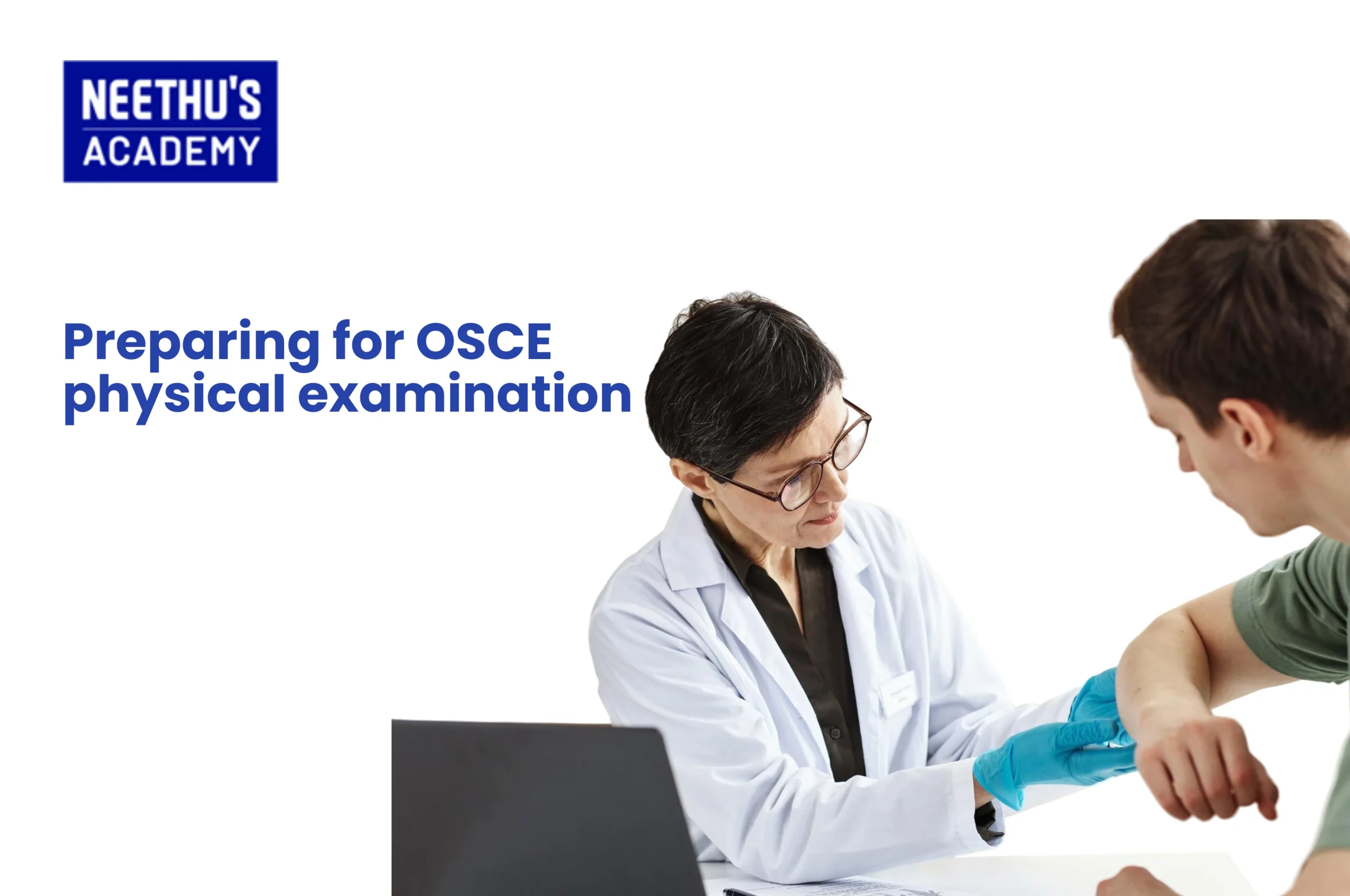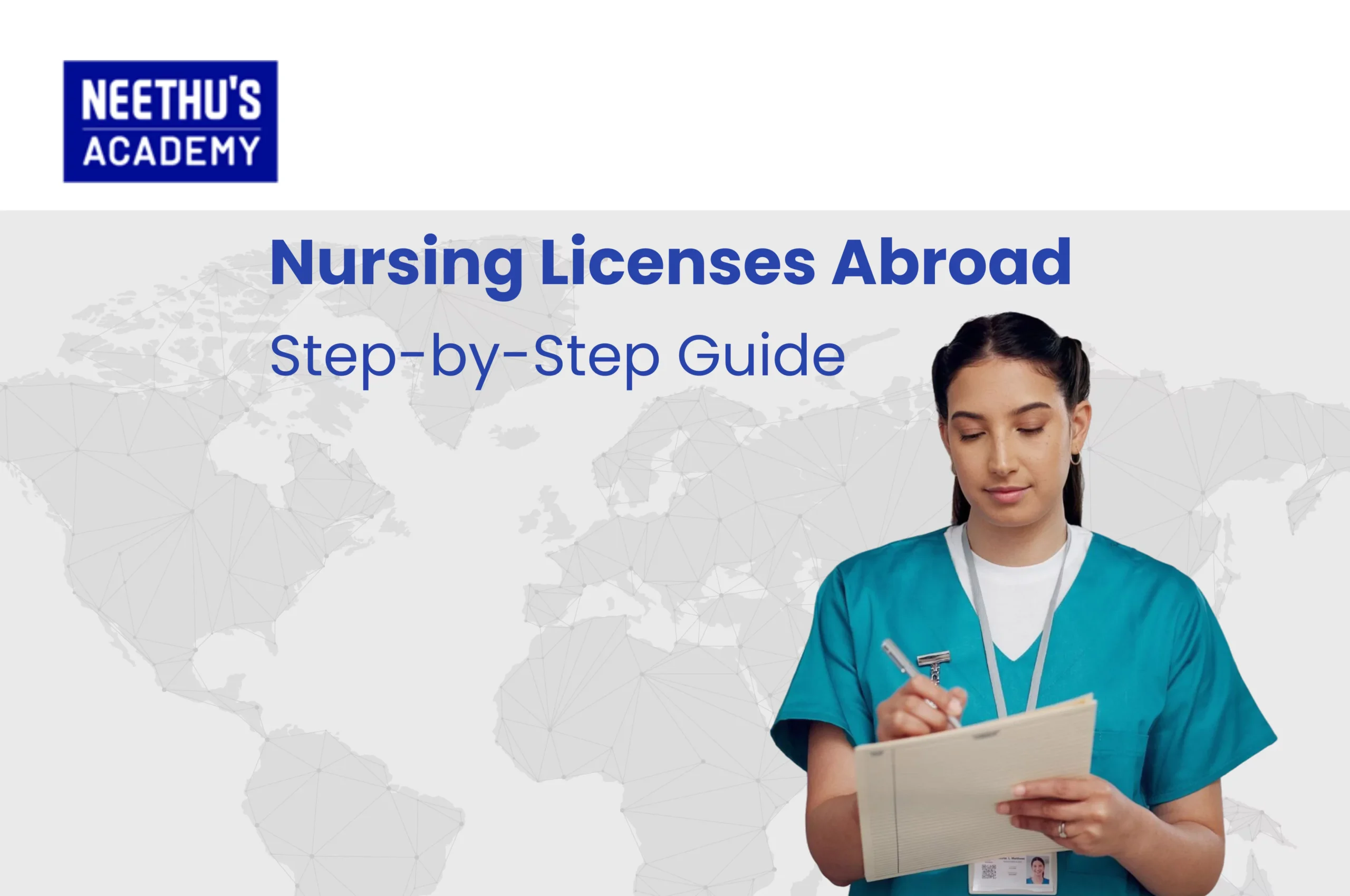OSCE is a critical assessment for healthcare professionals that tests not only the clinical knowledge but also the practical and communication skills…

Ultimate Guide to Preparing for OSCE Physical Examination
The Objective Structured Clinical Examination (OSCE) is among the most critical exams for medical, nursing, and healthcare students globally. In contrast to written exams, the OSCE tests actual performance in real-time clinical settings. It tests your capacity to perform physical exams, interact with patients, decide, and portray professionalism.
OSCE physical examination preparation takes a special mixture of theoretical knowledge and practical clinical skills. A lot of students find the OSCE to be difficult due to the fact that it is comprised of knowledge, technique, and confidence, all bound within a time limit. To excel, students require intensive study, periodic practice, and exposure to model clinical settings.
Components of the OSCE Physical Examination
The OSCE is divided into several stations, each on a particular clinical task. Each station is 5–10 minutes long and features either a mannequin or a standardised patient. The tasks may involve:
- History taking
- Communication and counselling
- Physical examination
- Clinical decision-making
- Lab or imaging results interpretation
In the case of the OSCE physical examination, the entire attention is directed at your proficiency to perform good, safe, and complete physical exams. They can include
- General assessment: General appearance, hygiene, mental status, posture, and vitals.
- System-specific assessments: Cardiovascular, respiratory, gastrointestinal, musculoskeletal, and neurological systems.
- Procedural skills: Blood pressure, IV insertion, catheterisation, and other nursing/medical procedures.
This part of the OSCE is marked using a standardised checklist, so precision, completeness, and communication are all important.
OSCE Physical Exam Checklist
Having a systematic OSCE physical examination checklist is crucial to success. It ensures that all the necessary steps are addressed within the available time. Below is a general outline:
General Steps:
- Wash hands properly
- Introduce yourself to the patient
- Verify patient identity
- Explain the procedure in detail
- Obtain informed consent
- Maintain patient comfort and privacy
- Apply proper draping and positioning
System-Based Examples:
1. Cardiovascular Examination:
- Examine hands, face, and chest for evidence (clubbing, cyanosis, etc.)
- Palpate radial and carotid pulses
- Take blood pressure
- Auscultate heart sounds
- Check for peripheral edema
2. Respiratory Examination:
- Note respiratory rate and effort
- Examine chest for deformity
- Palpate for expansion of chest and position of trachea
- Percuss chest
- Auscultate breath sounds
3. Abdominal Examination:
- Inspect for distension, scars, or masses
- Auscultate bowel and vascular sounds
- Palpate lightly and deeply
- Percussion for the enlargement of organs
4. Neurological Examination:
- Mental status and cranial nerve check
- Test motor and sensory function
- Evaluate reflexes and coordination
- Check gait and balance
Practice using this OSCE physical exam checklist regularly during your study sessions. Repetition builds muscle memory and ensures nothing is forgotten on exam day.
Effective OSCE Preparation Strategies
OSCE physical exam prep is more than just reading textbooks. It’s doing, observing, reflecting, and more. These are a few tips:
1. Know the Format
Know what to expect: number of stations, type of tasks, timing, and marking scheme. Practice past OSCEs and practice stations if available.
2. Mimic Actual Exam Conditions
Create mock OSCE stations with coworkers. Work under a timer, dress in clinical attire, and mimic the entire experience to master time management and high-pressure skills.
3. Peer Group Study and Feedback
Role-play with coworkers—candidate, examiner, and patient. Peer feedback identifies blind spots and corrects errors early.
4. Record and Review
Record mock performances of your examinations to evaluate posture, tone, and technique. Peer review based on video reviewing can greatly aid your OSCE examination skills.
5. Clinical Exposure Practice
Wherever there is an opportunity in hospital practice or simulation settings. Observing actual patient exams boosts confidence as well as clinical judgment.
6. Practice Communication
Effective communication is half the battle in conducting an OSCE. Practice relaying procedures smoothly, empathetically, and in a professional way.
Enhancing OSCE Physical Skills
Your OSCE physical skills are your key to success. Here’s how to optimize them:
- Master Techniques: Don’t memorize steps—learn why each step is done. Accuracy comes from knowledge and not repetition.
- Use Visual Aids: Video tutorials and anatomy charts can demonstrate tricky techniques and improve your approach.
- Attend Skills Workshops: Most coaching centers or institutes organize skill sessions for practical OSCE physical practice.
- Reflect on Feedback: Consider all feedback and incorporate it into making your methods better. Be willing to break up bad habits early.
If you are practicing solo, online materials can support your OSCE clinical practice, but nothing can compare to real-time simulation with interaction with humans.
Best OSCE Coaching Centre in Kerala
India has become a hub of professional healthcare exam prep. As international medical careers become popular with more and more students, especially those planning to pursue international medical careers, several centers have designed special OSCE prep courses. Neethu’s Academy stand out as the top OSCE Coaching Center due to:
- Individualized study plan and simulated OSCEs
- Veteran mentors and trainers
- Accurate feedback and performance evaluation
- Handpicked materials as per recent exam patterns
Selecting the appropriate OSCE coaching center gives you an advantage in excelling in theoretical as well as practical knowledge of the exam.
Conclusion
It takes more than just passing an exam to master the OSCE physical examination—it’s about demonstrating your ability to safely and effectively care for patients. A sound understanding of physical exam skills, along with good communication, time management, and clinical judgment, will take you to success.
By using a systematic OSCE physical exam checklist, practicing OSCE physical stations regularly, and maybe enrolling in a high-class OSCE coaching centre, you can convert anxiety to confidence.
Regardless of your level, regular OSCE clinical practice and planned preparation will make you ready not only for the exam, but also for actual patient care.
Frequently Asked Questions
Practice regularly with mock stations, time yourself, and use checklists for systematic revision.
Join study groups, get feedback, and create practical experiences with real life-like clinical case studies.
Utilize online videos, mirror practice, and timed checklists to mimic stations and self-practice.
Related Blogs
- All Posts
- OSCE
Mastering communication skills is a must for better performance in the OSCE. Effective communication in OSCEs helps in rapport building with patients,…
The OSCE or the Objective Structured Clinical Examination is, in fact, one of the most important assessments for doctors and other healthcare…
Course Enquiry
Error: Contact form not found.
Latest Posts
- All Posts
- canada
- CBT
- DHA
- French
- GENERAL
- German
- IELTS
- IQN NEW ZEALAND
- MOH
- NCLEX-RN
- NHRA
- OET
- OSCE
- PROMETRIC
- PTE
- TOEFL
- Back
- NCLEX - NGN
- Back
- OET FOR PHYSIOTHERAPIST
- OET FOR PHARMACIST
- OET FOR DOCTORS



